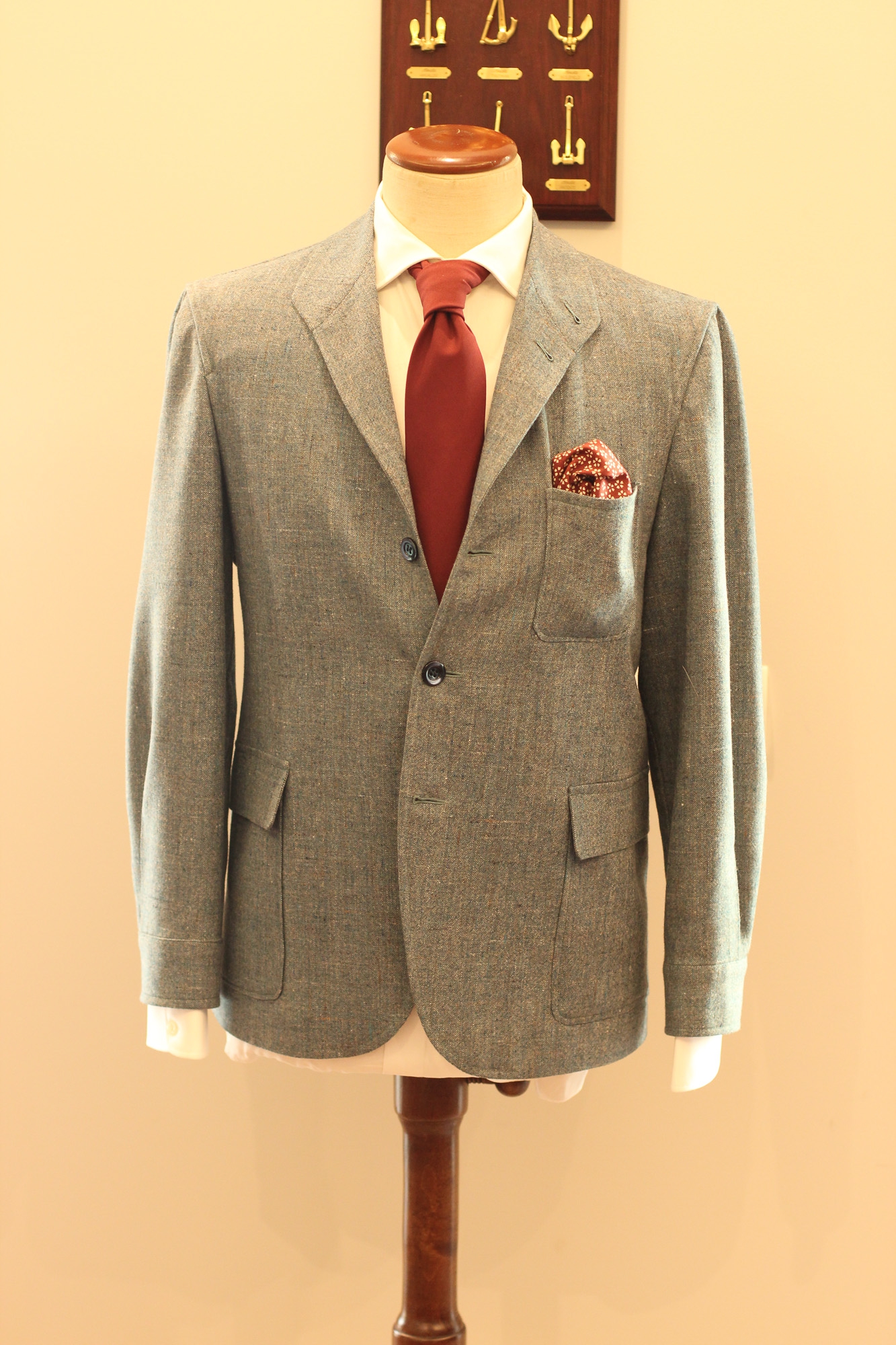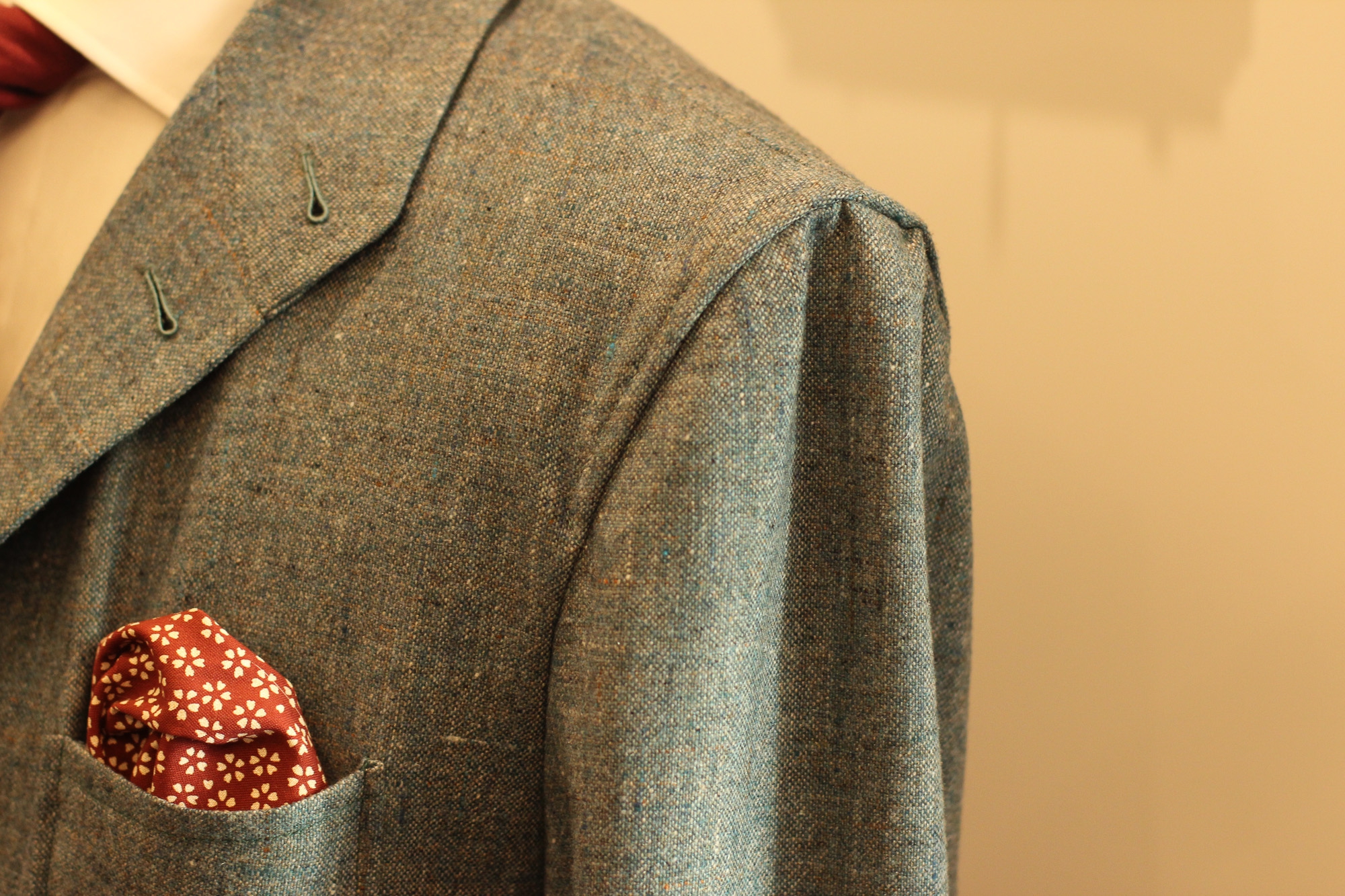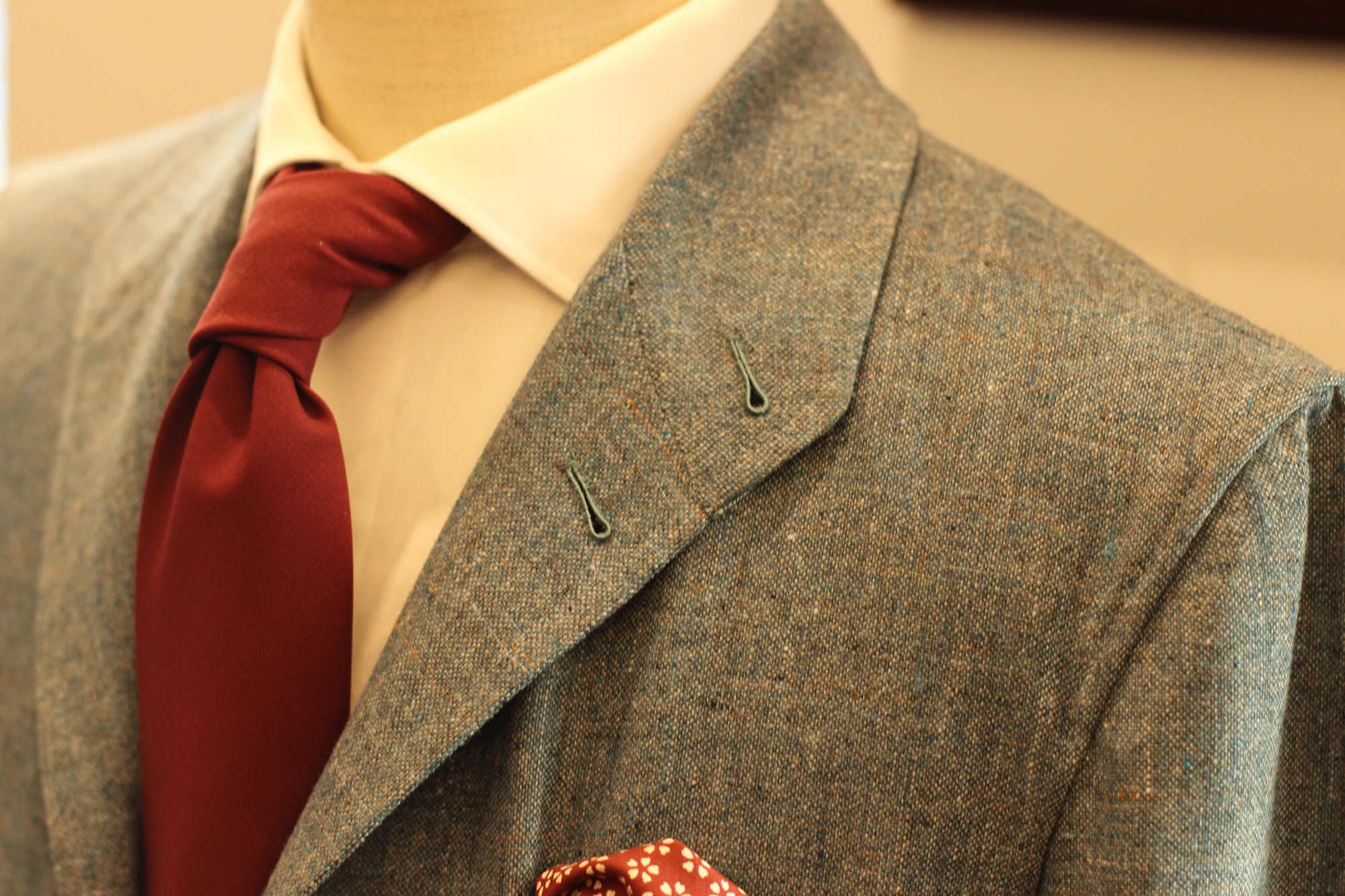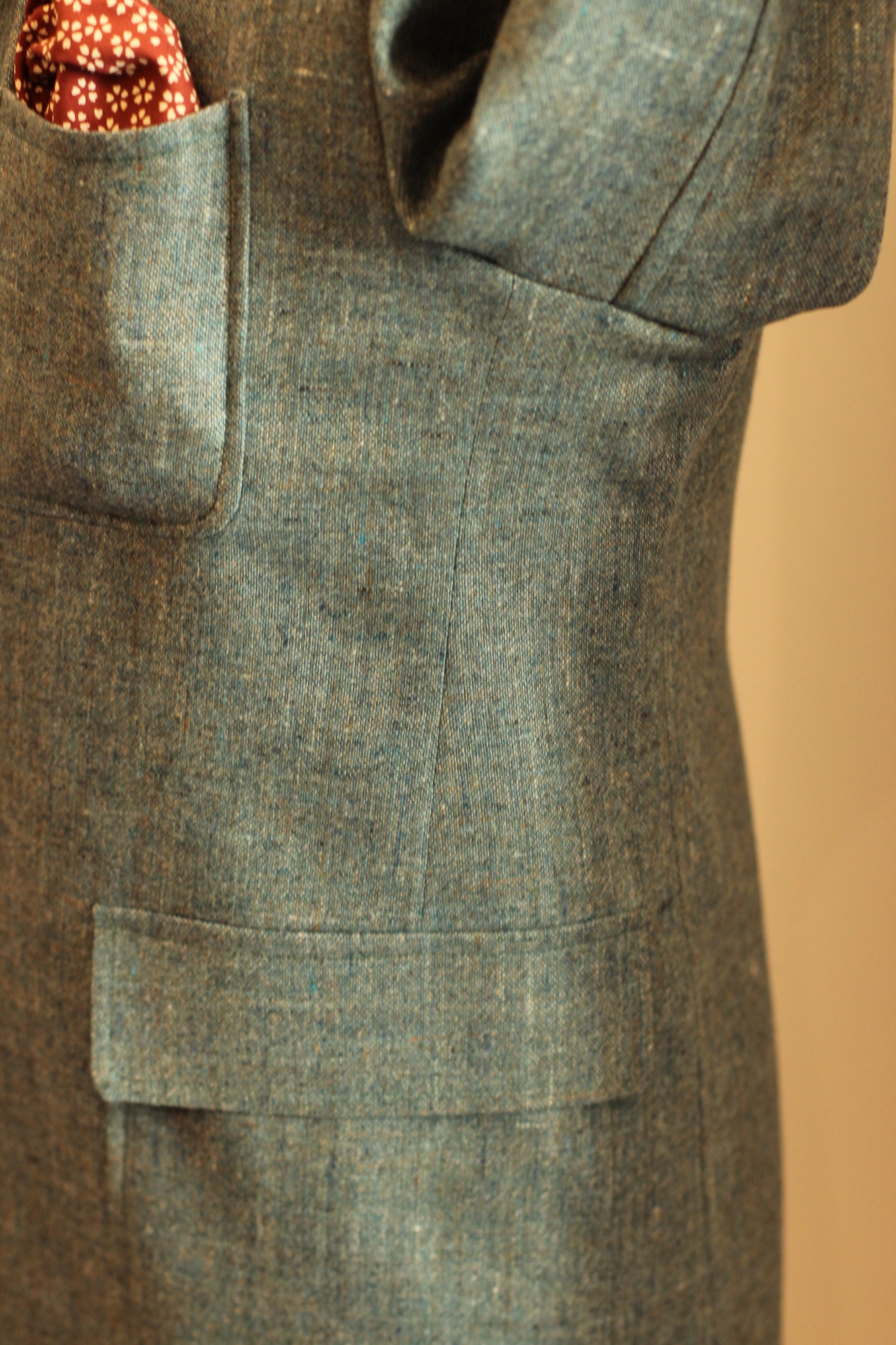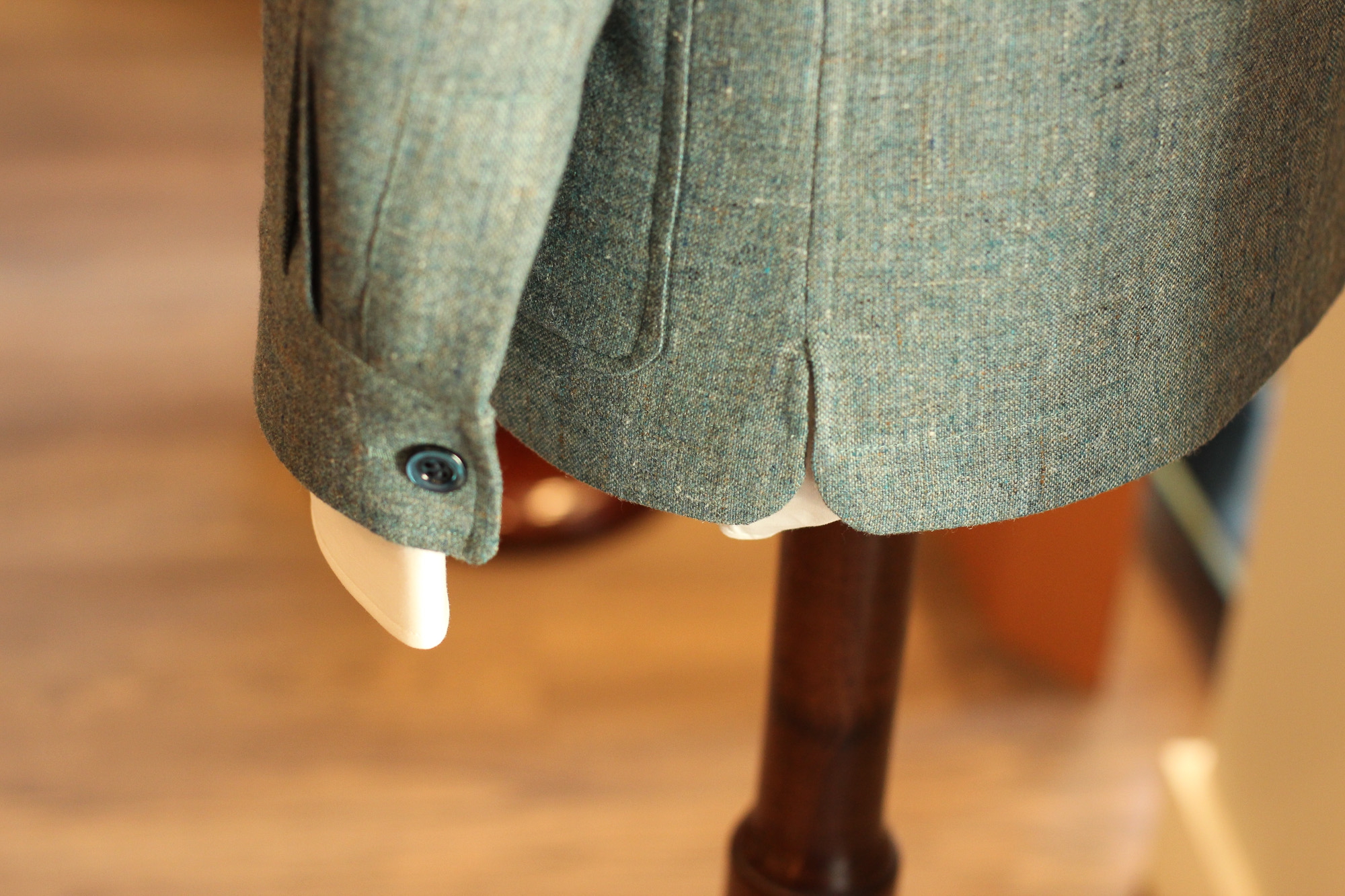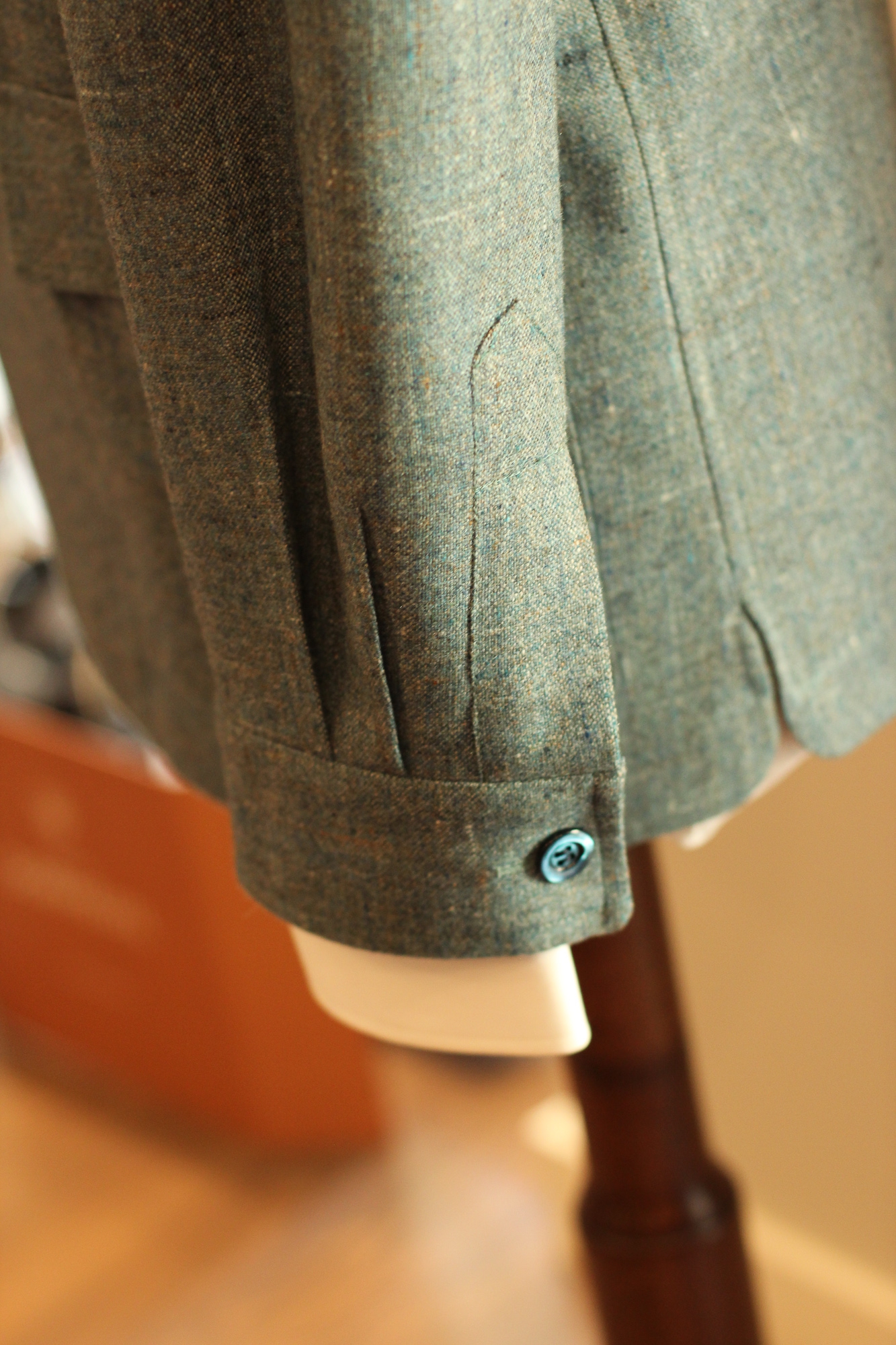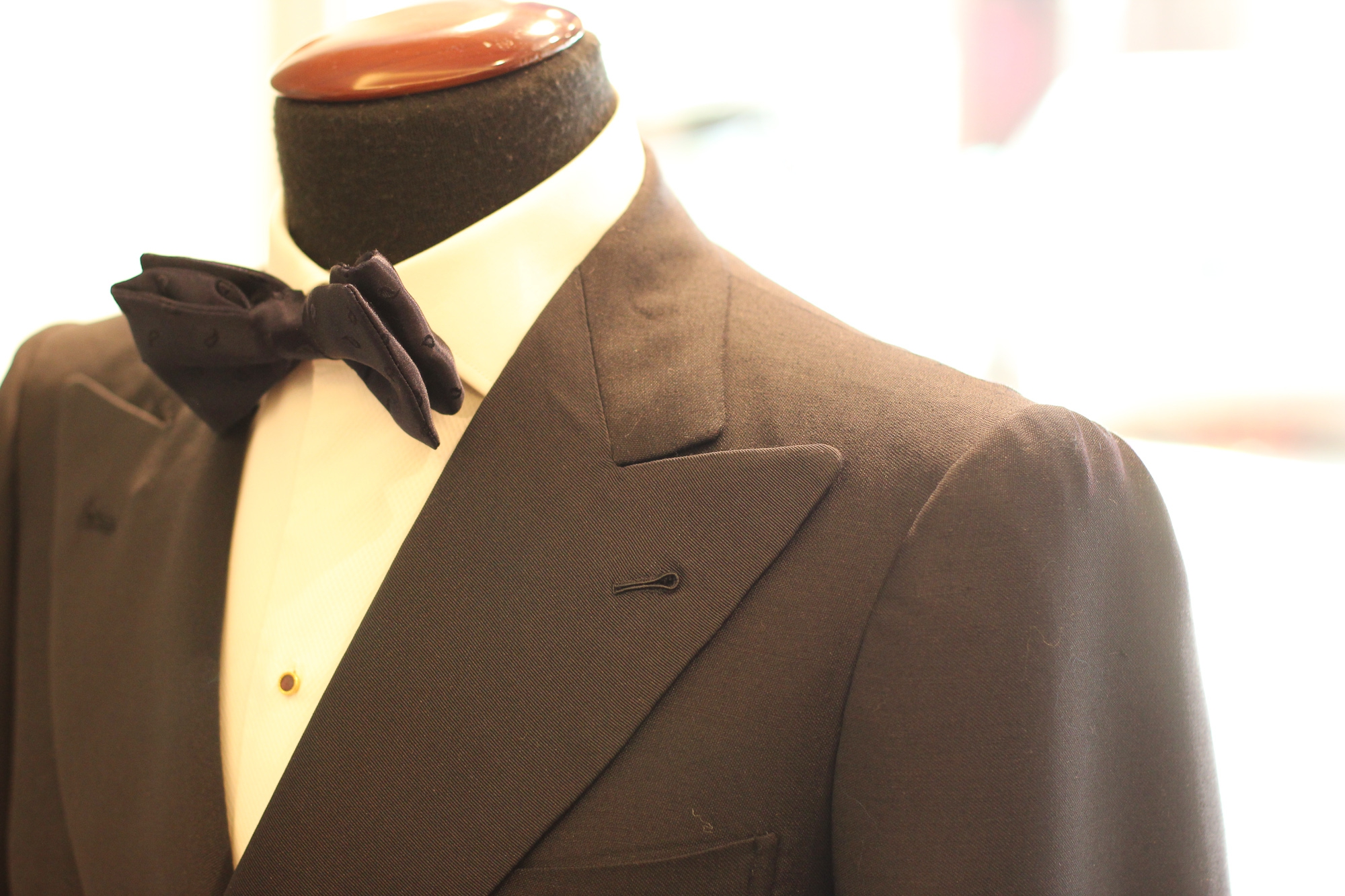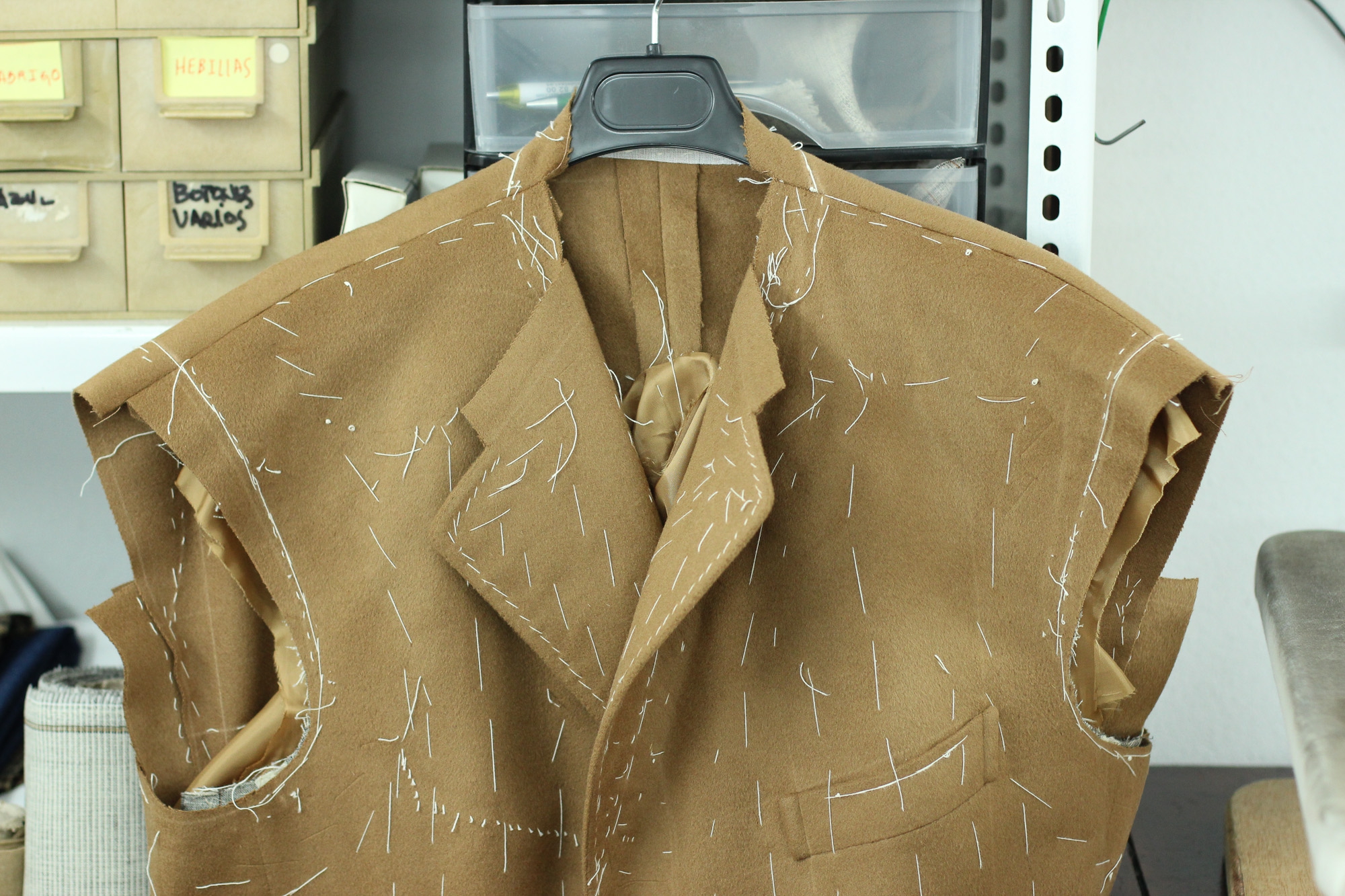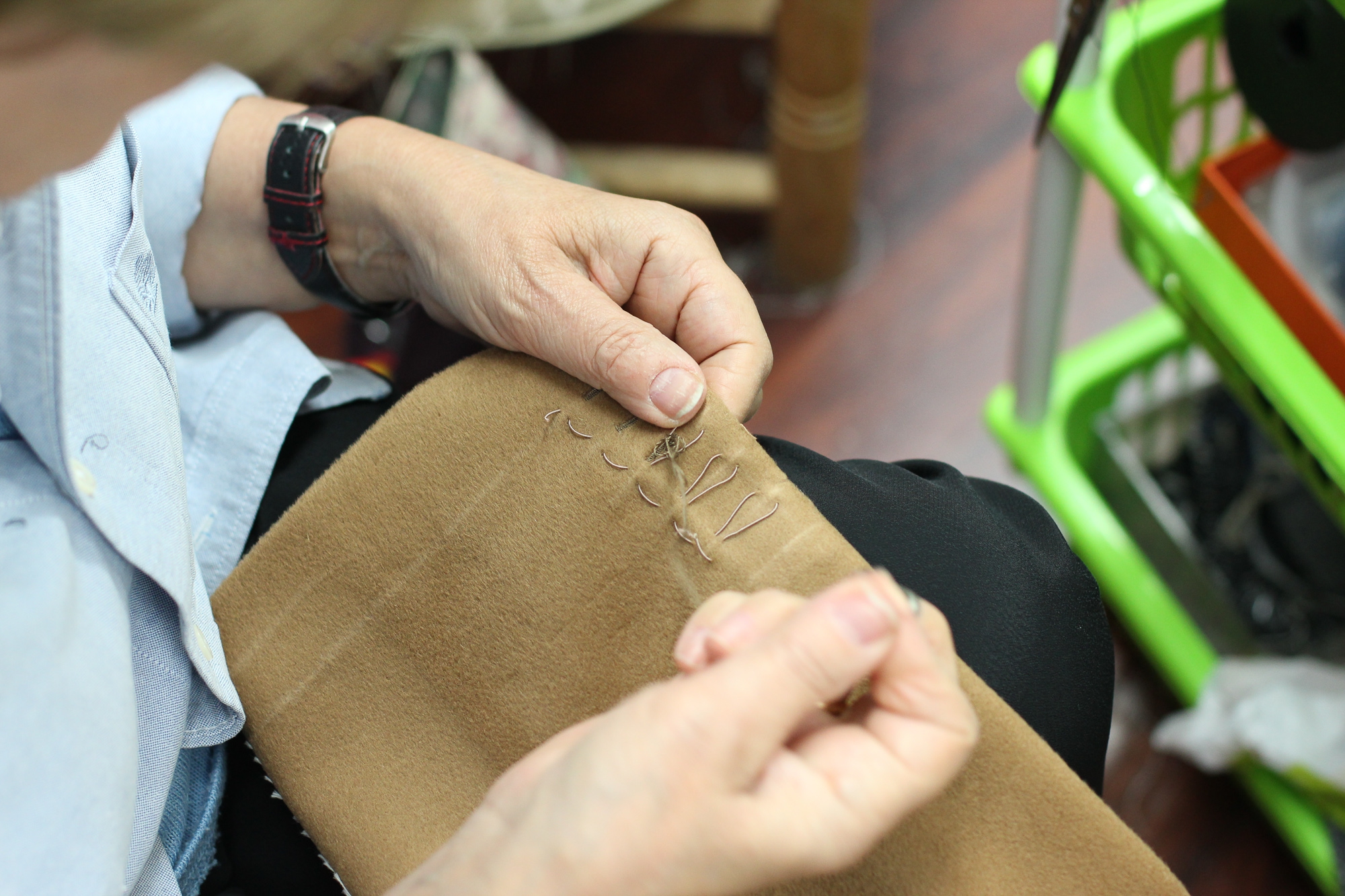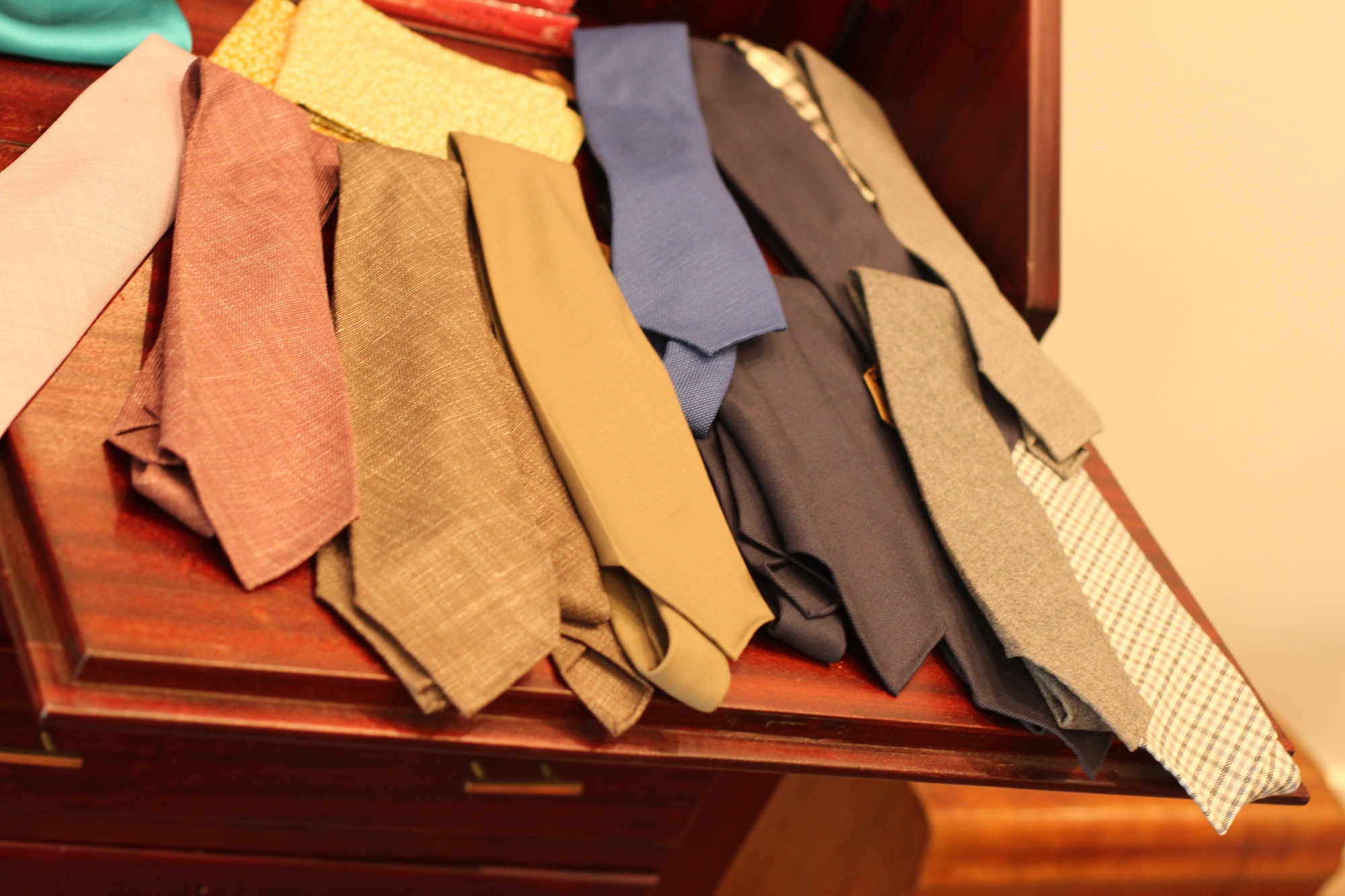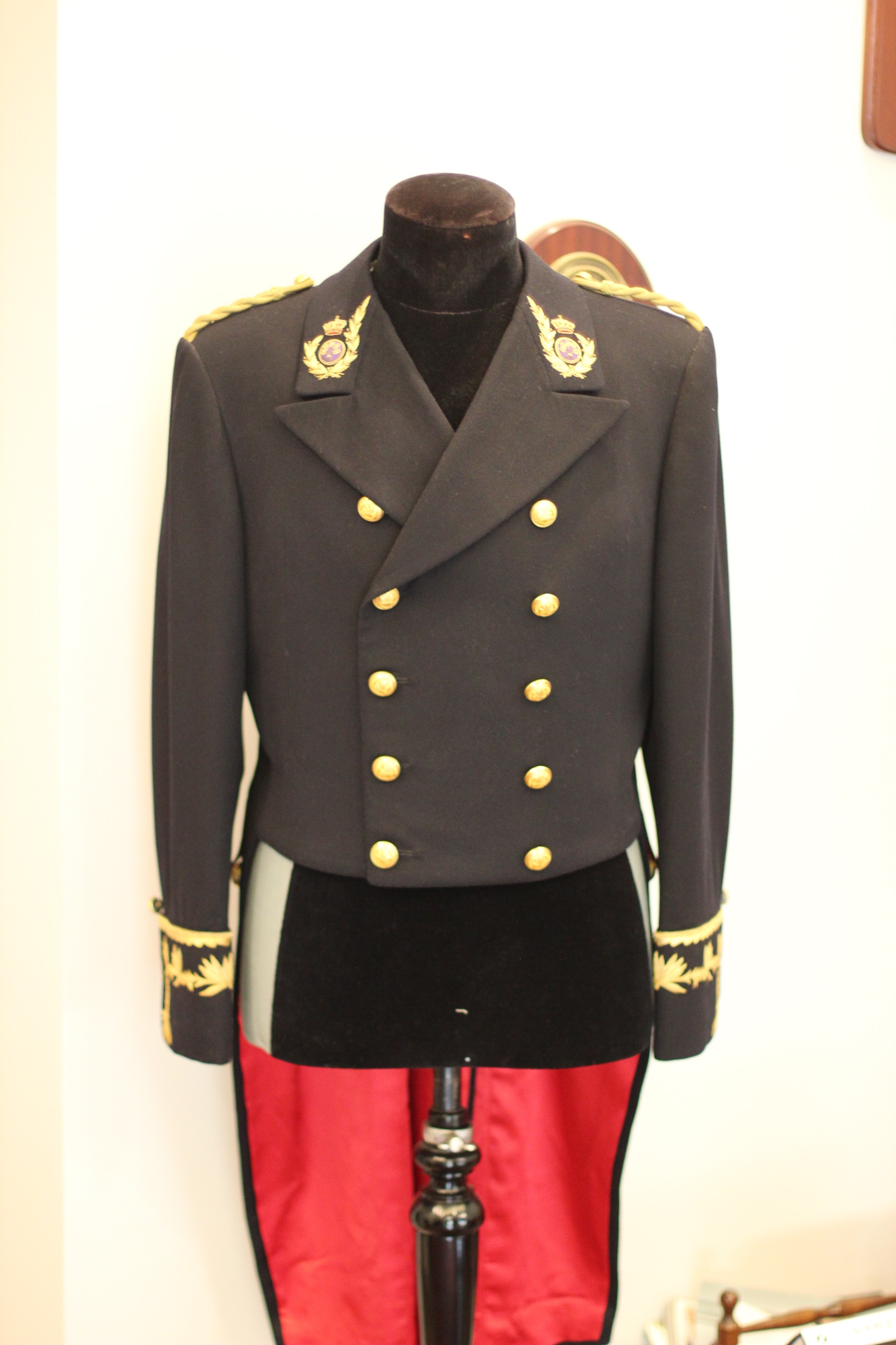During a recent trip to Spain, I met Agustin Garcia Montero, a young 34 year-old Spanish tailor, born and bred in Madrid. Agustin is the owner of Sastreria Serna, located on Calle General Pardiñas 54. The previous owner, Cecilio Serna met Agustin when he was 17 years-old and totally under the spell of the art of tailoring. He took him under his wing, his first tasks were to deliver finished suits to clients as he gradually began to learn the trade. Seventeen years later, he took his place at the helm of the company when Cecilio retired. “Spanish tailoring is midway between English and Italian tailoring,” opens Agustin, as he shows me the elegant atelier which proudly displays photos of Spanish royalty wearing attire crafted by the expert hands of Cecilio and Agustin.
The first noticeable trait of their jackets is without a doubt the sloping lapel, with a rounded off tip and an 80 degree cran, one of the standout characteristics of the “Spanish jacket”. “Only when there is a patch pocket or an unlined jacket do we take the second dart right to the bottom hem,” explains Montero, adding that their jackets rarely have darts running right to the bottom or under the collar, not even when the wearer is broad-chested. The familiar shape of the buttonhole cannot help but catch your eye: it is a charming interpretation of the Milanese buttonhole, 3.5 centimetres long with the classic teardrop end.
After a few minutes, our conversation inevitably turns to another major player in the Spanish school of tailoring, the Teba. First created between the end of the 1800s and the start of the 1900s, this country jacket bears the name of the Count of Teba, an elegant Spanish nobleman who received one as a gift from King Alfonso XIII of Spain. Legend has it that it turned out to be so comfortable to wear during hunting, that the count asked his tailor to reproduce it; it then became a huge hit amongst the Spanish aristocracy. It has little structure, just one dart on the front making the front quarters very straight, barely open at all; it has no cran, two buttonholes on the collar, shirt-like sleeves and flap pockets.
The way the first fitting is carried out is fascinating, to say the least. The jacket’s under collar has not yet been basted on, because they trace a chalk line at the point in which the back and front meet the shirt collar, before beginning a procedure that I must admit I had never before encountered. Whilst checking that the front parts do not exceed the chalk line on the shirt collar, they pin the rear part to the collar and literally tear the basting off the jacket being worn by the client before reconstructing it to his body’s contours (while he is still wearing it), paying particular attention to the fall of the cloth and the lower parts of the jacket. I could hardly not take advantage of such mastery, so I commissioned a three-piece single-breasted suit in pin-striped woolen flannel by Scabal. Watch this space for photos of the first fitting.
Bespoke hugs,
Fabio



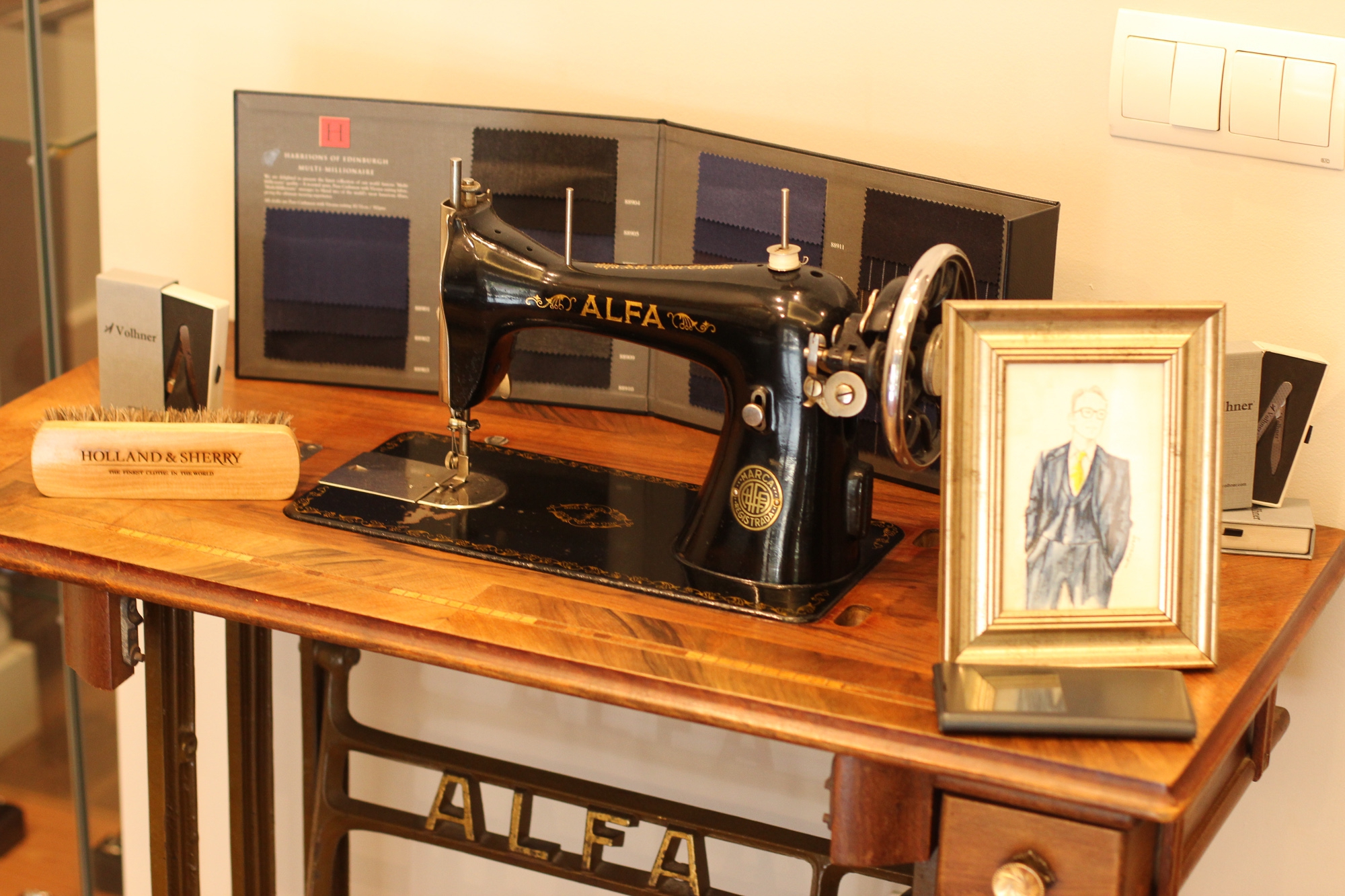

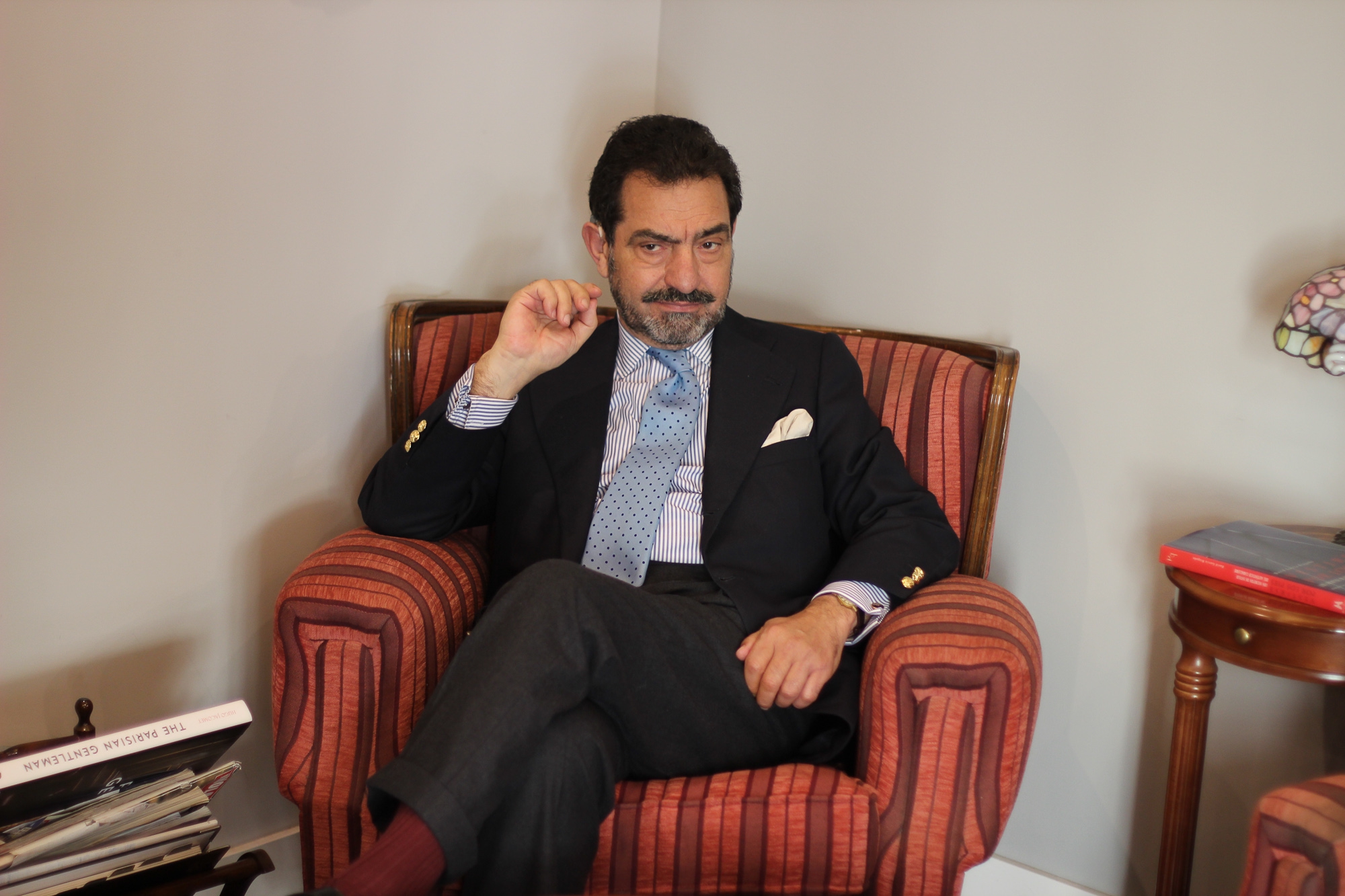
.jpg)
.jpg)
